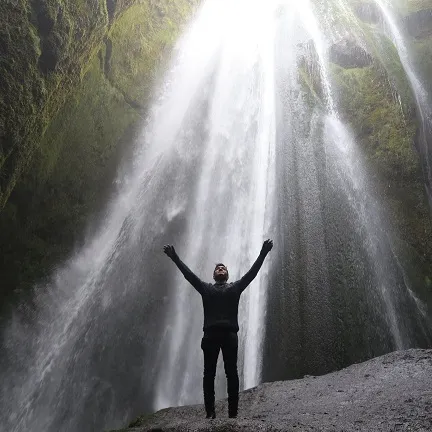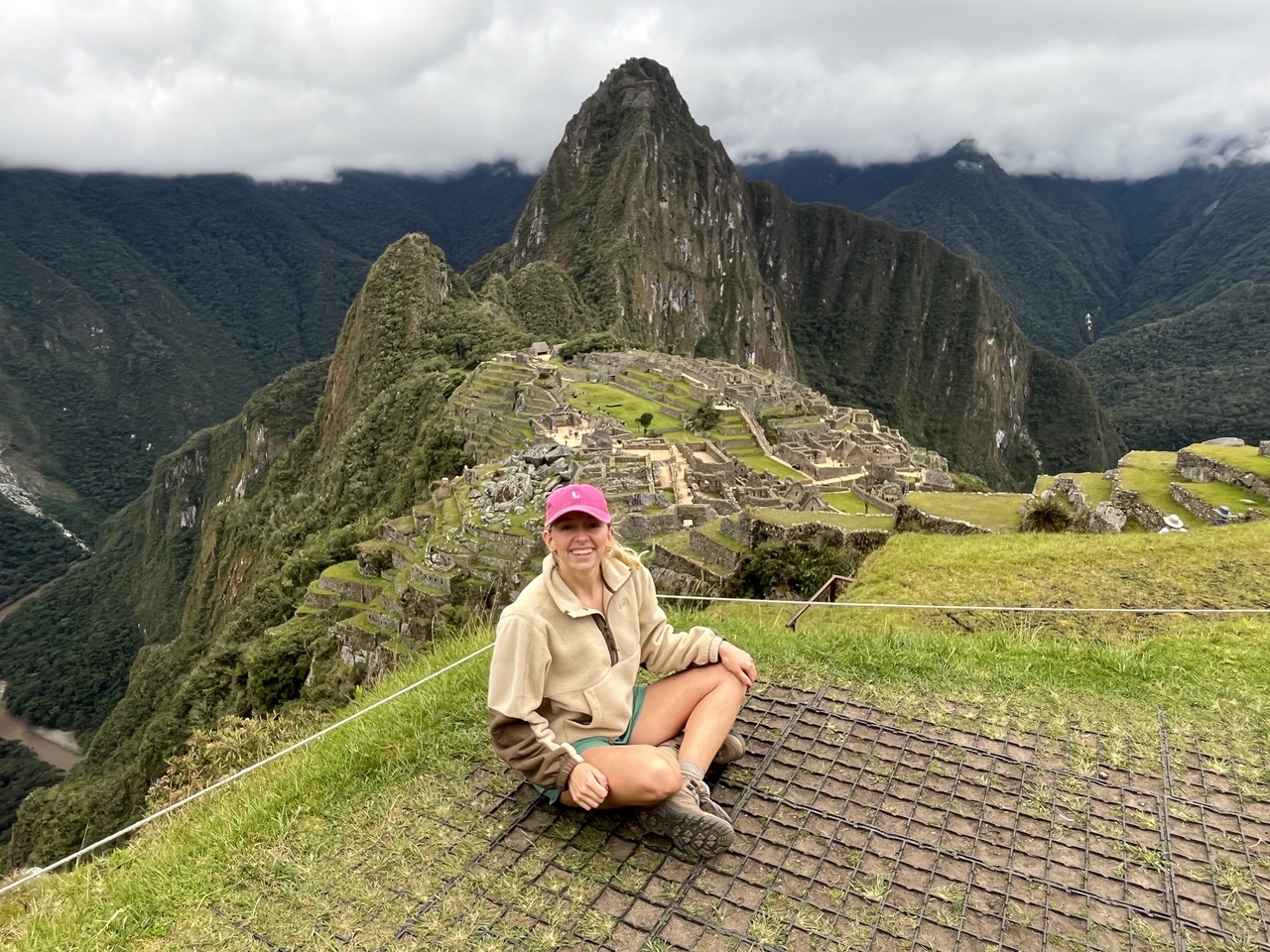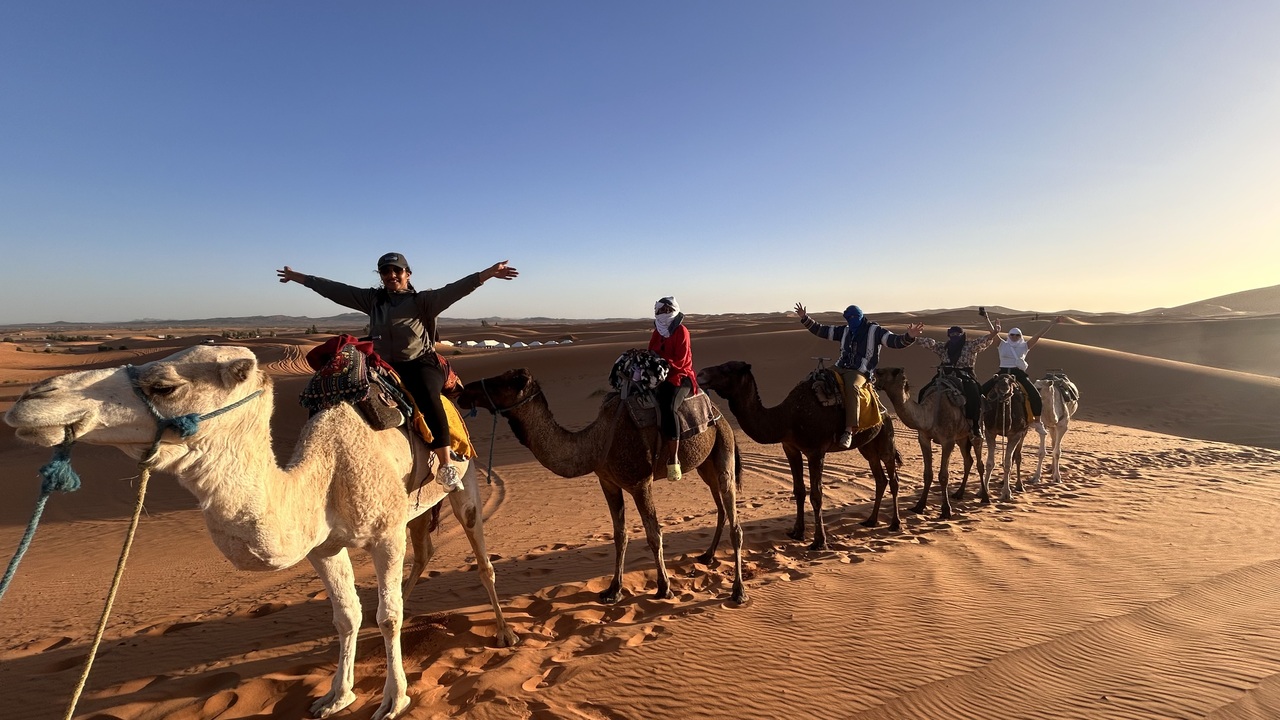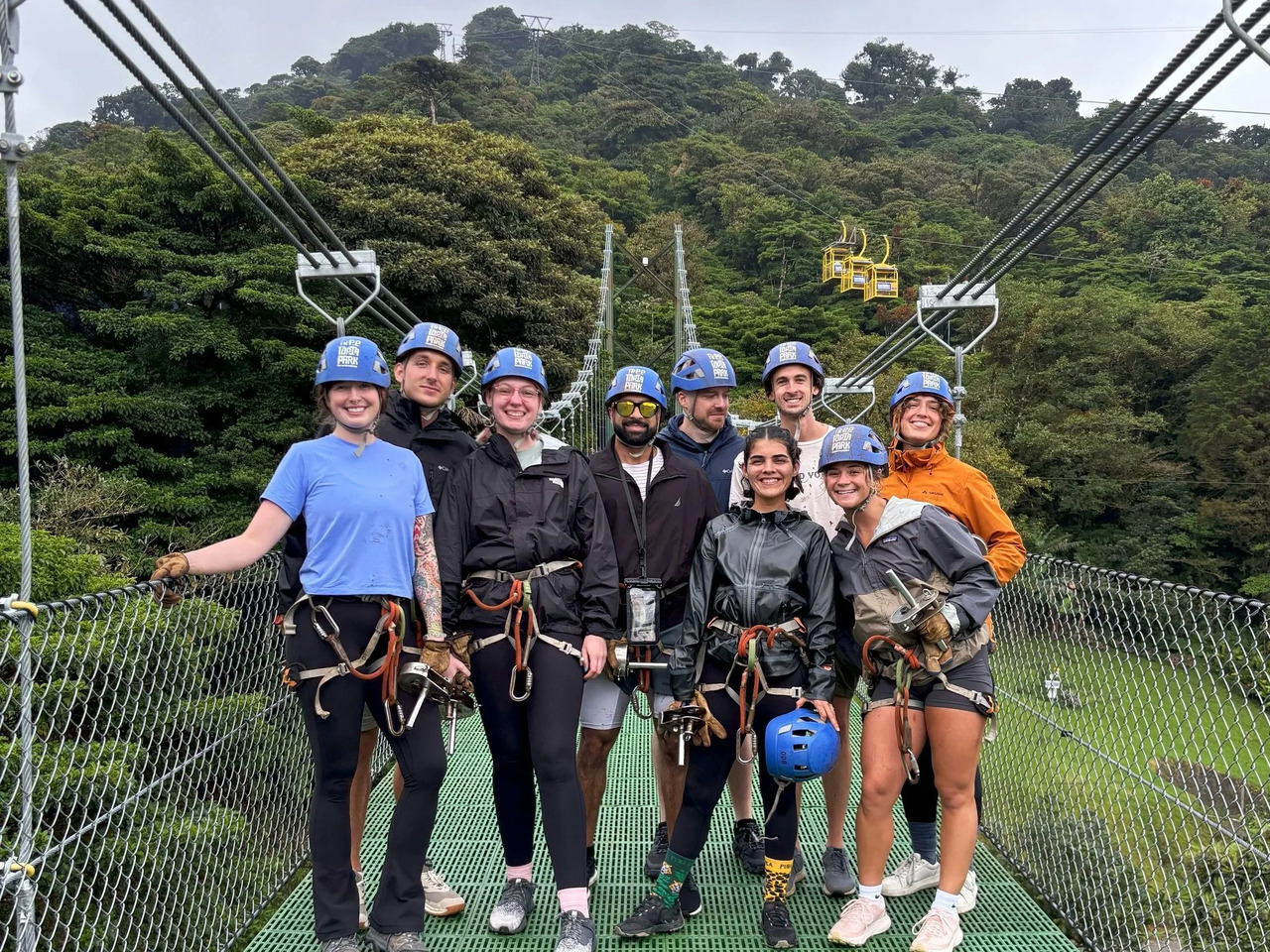Ever since I discovered my love for traveling as a child (mostly through my books and stories from my grandpa), I’ve wanted to visit all the world's wonders. And that’s pretty much the only thing I knew about Jordan - that it was home to Petra, one of the seven ancient wonders. Little did I know all the other wondrous places Jordan had in store for me.
If gazing up at ancient treasures, sleeping under a galaxy of desert stars, or floating effortlessly in mineral-rich waters sounds appealing to you, Jordan is the place to make those dreams real. This country is a kaleidoscope of history and natural wonder, so keep reading to discover highlights from our 7-day Jordan trip:
Day 1: Arrival in Amman and a warm welcome to Jordan
After landing at Queen Alia International Airport, we met our trip leader, who whisked us off to the hotel through the bustle of Amman. After settling into our hotel and a quick freshen-up, we gathered to meet our fellow travelers for a welcome meeting. Over our first dinner, we dove headfirst into Jordanian cuisine: think mansaf (lamb cooked in fermented yogurt sauce over rice), mezze spreads of creamy hummus and smoky baba ghanoush, and pillowy, fresh-baked khubz bread. The warmth of Jordanian hospitality was unmistakable from the very beginning.

Day 2: Citadels, tombs, and into the desert
Waking up to a breakfast of fresh bread, labneh (thick and creamy Middle Eastern cheese), and strong coffee, we set off to explore the heart of Amman. The Amman Citadel is a sweeping canvas of history: Neolithic settlements, Bronze Age tombs, and the towering columns of the temple of Hercules. From atop the hill, the city sprawls in every direction, layers of white stone stacked up into the hills. We wound our way down past the grand Roman Theatre before stopping for lunch downtown (pro tip: always say yes to extra hummus), and then we hit the road.
.jpg)



As you journey south to Wadi Rum, the landscape morphs. Olive groves give way to wheat fields, and eventually to the vastness of red sand and rugged hills. By sunset, we’d arrived at our Bedouin camp with canvas tents waiting, tea brewing, and stars already blinking into view. That first night beneath a blanket of stars, feasting on a traditional Bedouin meal, I almost had to pinch myself. As darkness fell, we exchanged stories around the campfire, wrapped in the hush of the desert night.
Day 3: Wadi Rum Jeep Tour
The only way I can describe waking up in Wadi Rum is profoundly peaceful, a golden sunrise surrounded by the pink-washed mountains, the silence broken only by the occasional call of a desert bird. After a camp breakfast, we set out on a Jeep tour with local Bedouin guides.
The desert here isn’t just sand. “Valley of the Moon” is a vast canvas of wind-carved arch formations, canyons inscribed with ancient petroglyphs, and sand dunes waiting to be scrambled up for panoramic views. We hiked through narrow gorges and scrambled up scarlet dunes, our guides sharing stories along the way. Lunch was a simple boxed meal in the shade, but honestly, it tasted like a feast after a desert day under the Middle Eastern sun.





Back at camp, the evening was a blur of laughter, music, and another round of desert-cooked delights. There’s nothing quite like falling asleep in a tent as a cool desert wind shivers across the sand outside.
Pro tip: Temperatures in the desert can be extreme, so pack a light scarf for warmth at night and to shield your face from the desert sun during the day.
Day 4: The Lost City of Petra - A World Wonder
Waking early, we said goodbye to our Bedouin hosts and took our last photos of Wadi Rum’s wild beauty. The drive to Petra took about two hours, just enough time for my anticipation to reach a fever pitch in light of the fact that I’d finally be striking off another world wonder from my bucket list.
After arriving in Wadi Musa, we scarfed down an amazing lunch buffet of Middle Eastern delicacies and then it was time for the main event. Nothing prepares you for that first walk through the Siq, a winding, narrow corridor framed by towering cliffs. Suddenly, the Treasury bursts into view, an iconic facade over 130 feet tall and bathed in pink and gold, every detail chiseled by Nabataean hands more than two millennia ago.

We wandered through Petra’s labyrinth: rock-cut tombs, temples, and the Street of Facades (movie buffs: yes, this is the Indiana Jones site!), learning about the history and culture of this ancient site.


That night, we returned to see Petra glowed softly under the stars, and the options for exploring or tasting local food in Wadi Musa were endless. If you visit, don’t miss Petra by Night, the ancient city lit by a thousand candles is pure magic.


Day 5: More Petra!
One day simply isn’t enough for Petra, so we laced up our shoes for a second round. There are so many areas to explore here, I recommend hiking up to the Monastery, Petra’s largest monument. The climb is steep, but each turn reveals sweeping vistas and intricate carvings hidden among the rocks. The view from the top is worth every step, and will show you just how vast and mysterious this ancient city is. If you still have energy left, the royal tombs and the ancient theater are also worth exploring.


Pro tip: Hydrate, hydrate, hydrate! And carry some snacks for a quick pick-me-up as you explore, trust me, you’ll need it.
That night, we sampled more local fare at a lovely local family’s home. Pro tip: try magloubeh (a savory upside-down rice and vegetable dish) and definitely don’t skip the cardamom-infused Arabic coffee. The food and hospitality in Jordan are as memorable as its monuments.
Day 6: The Dead Sea and Madaba
After a final breakfast in Petra, we hit the road driving west toward the Dead Sea, the lowest point on earth. Here you can float weightlessly on the mineral-rich waters made impossibly buoyant due to the salt levels (Pro tip: don’t shave right before you go in, and don’t forget to pack a swimsuit you don’t mind staining with salt and mud!). We slathered on the famous black mud, which is said to work wonders for your skin, and shared plenty of laughs trying not to tip over.


Refreshed and a bit sun-kissed, we drove to Madaba, a town famed for its ancient mosaics. Strolling down the tourist street of Hussein bin Ali Street, we browsed shops filled with intricate mosaic tiles and local handicrafts. We paused to watch Bedouin artisans crafting silver jewelry, tested handcrafted perfumes, and sampled knafeh(or kunafa), a sweet cheese pastry doused in syrup (trust me, it’s addictive).


Dinner was a celebratory affair, lively and bittersweet as our group realized how quickly the week was coming to an end, amidst sharing our favorite trip highlights and planning future adventures.
Day 7: Farewell, Jordan!
After a last breakfast together, we hugged our goodbyes and headed for the airport, bags heavier with souvenirs and hearts brimming with memories. If you have some time, consider heading out early to visit St. George’s Church, home to the oldest mosaic map of Jerusalem.

Must try local foods in Jordan
- Mansaf – The national dish: lamb simmered in jameed (fermented yogurt) and served over rice and almonds.
- Magloubeh – An “upside-down” casserole of rice, veggies, and chicken or lamb, flipped at the table with a flourish.
- Zarb – Bedouin barbecue cooked underground with potatoes and carrots, smoky and tender.
- Knafeh – A sweet, syrupy cheese pastry topped with pistachios, heaven for dessert lovers.
- Falafel & Hummus – You’ll find these classics everywhere, and each stall claims to have the best in Jordan.
- Arabic Coffee & Mint Tea – Always shared, always strong, and always accompanied by stories.
Tips to Know Before You Go
- Visas and arrival: Most nationalities can get a visa on arrival at Queen Alia International Airport, but always check the latest requirements.
- What to wear: Jordan is fairly liberal but respectful of tradition. Lightweight, modest clothing works best, think long pants or skirts and tops with sleeves, especially in rural or religious sites. A scarf is handy for sun and sand.
- Hydration: The climate is arid, so carry a reusable water bottle and drink up, particularly in the desert and at the Dead Sea.
- Cash & currency: The Jordanian dinar is the local currency; ATMs are common in cities but less so in remote areas.
- Food allergies or dietary needs: Jordanian cuisine is easy to navigate as a vegetarian/vegan, some of my favorites include falafel, hummus, mutabbal, fuul, and tabbouleh. The markets are also brimming with seasonal fruits, olives, and nuts, perfect for snacking on the go.
- Respect local customs: Greetings are warm, and it’s polite to accept tea or coffee when offered. Always ask before photographing people, especially in small villages or markets.
Jordan will leave its mark on you with its generosity, stories etched in stone, and endless capacity to astonish. If your wanderlust is seeking somewhere ancient, wild, and welcoming, let this be your nudge to visit Jordan and for U30X to take you there! They also have trips for people in their 30s and 40s.




.avif)

























